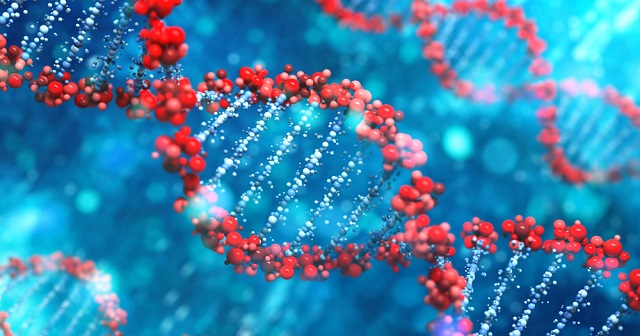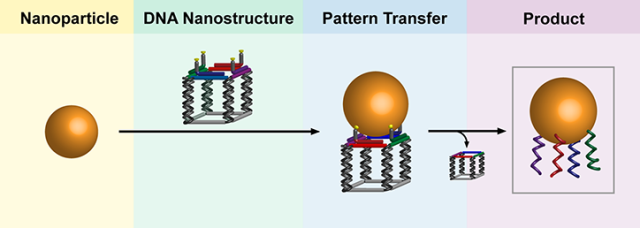A novel technique that uses DNA to encode information onto the surface of gold nanoparticles has been developed. This new method can be used to control the 3D structure of nanoparticle assemblies in nanodevice fabrication or to produce nanoparticles that will bind to and kill tumor cells.

The exotic chemical, electronic and optical properties of gold nanoparticles make them attractive to researchers; who are striving to use them in nanoelectronics and in the treatment of cancers.
Nanoparticles, in the form of small nanoparticle clusters or large nanoparticle crystals exhibit even more exciting characteristics than single nanoparticles. However, it is difficult to manipulate and assemble the nanoparticles, which measure one millionth of an inch across, into clusters with a defined 3D shape using traditional lab tools.
To arrange nanoparticles small structures fabricated using synthetic DNA strands. DNA strands are perfect for this job as they can be chemically programmed, by means of their base sequence, to couple with other strands in specific patterns. This behavior can be exploited to produce DNA scaffolds around which gold nanoparticles can be assembled into precise 3D shapes.
However, the generation of these hybrid gold-DNA nanostructures is a complex and expensive procedure, which has significantly affected their availability.
The new technique developed by the McGill researchers to make DNA structures is the nanoparticle equivalent of the printing press, which is not only efficient and re-usable but also allows more data to be carried than previously possible.
These encoded gold nanoparticles are unprecedented in their information content. The DNA nanostructures, for their part, can be re-used, much like stamps in an old printing press.
Hanadi Sleiman - McGill University
Using the new method, the DNA structure can be created with a specific pattern of DNA strands extending from the main structure with a chemical “sticky patch” at the end of each strand.
Gold nanoparticles stick to the sticky patches when they come into contact with the DNA nanostructure. The assembly is then dissolved in distilled water to separate the component strands of the DNA nanostructure. As a result, the gold nanoparticle is left with the DNA imprint on it.
 Schematic showing how the nanoparticles are patterned
Schematic showing how the nanoparticles are patterned
From Stained Glass to Optoelectronics
Some of the characteristics of gold nanoparticles have been recognized for several centuries. Medieval artisans created the ruby-red color found in stained-glass windows by adding gold chloride to molten glass. Later studies revealed that this was the result of light scattering by the tiny gold particles.
According to the McGill scientists, their new method will enable DNA-encoded nanoparticles to be used in a variety of advanced technologies. Exploring the characteristics of structures constructed from these new building blocks will be the next task for the lab.
In much the same way that atoms combine to form complex molecules, patterned DNA gold particles can connect to neighbouring particles to form well-defined nanoparticle assemblies.
Thomas Edwardson - McGill University
The potential areas this new technology could benefit include research in biomedical sciences and in the fabrication of advanced optoelectronic nanodevices. It has been demonstrated that the patterns of DNA strands can be manipulated so the nanoparticles target proteins found on tumor cells which could be used for cancer detection or for the selective destruction of tumor cells.
The research has been published in the journal Nature Chemistry.